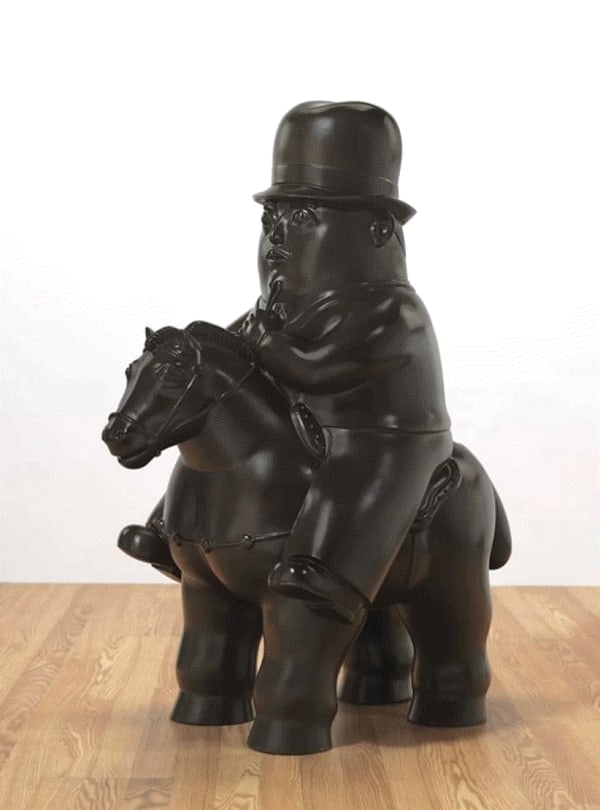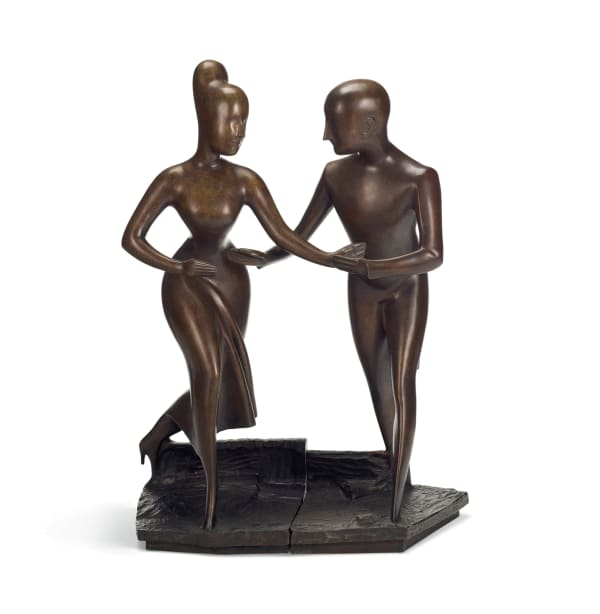Fernando Botero’s (1932-2023) voluminous paintings and sculptures made him South America’s best known and beloved artist. His works are sensual, joyful. Many are filled with humor, some with political satire. Some of his work was critical of politics and human rights violations, not just in Colombia, his birthplace, but internationally, as well.
Botero’s inspiration was the Old Masters and the everyday world around him. The unique style, with which he captured it all, is known as Boterismo.
The artist himself was very playful. With his continued success, Botero was able to travel around the world in his yacht and enjoy the Rolls-Royce Phantom V, that he called his “favorite toy.” He lived and worked in Colombia, Italy, America and France, where his paintings and sculptures were exhibited.
Botero began sculpting in 1972, a form he considered a natural extension of his painting. “Sculpture,” he said, “is painting without borders.” He worked first in wood, then clay and, finally, bronze. In the 1980s he began to spend summers working from a studio in Pietrasanta, a small town on the Tuscan coast that has attracted many fine artists.
The horse, the horse and rider, are recurring themes in Botero’s works. “The truth is that in sculpture the themes have always been the same,” Botero said. “For example, a horse: in art it has existed forever, since prehistoric times, but you see a Chinese horse, an Egyptian, or Assyrian, or a Picasso horse, and they are always different.”
Man on a Horse, available at Surovek Gallery, has been a favorite subject of Botero’s. Versions of Man on a Horse have been exhibited around the world and can be found in the collections of major venues around the world, including The Met.
Fernando Botero died on Sept. 15, 2023, at the age of 91 in Monaco, where he had a home.
Elie Nadelman (1882-1946) was inspired by the Greek and Roman sculptures he saw as a young artist when he visited the Glyptothek Museum in Munich.
He moved from his home in Warsaw to Paris and, eventually, to New York at the start of World War l. Nadelman’s interest in Classical sculpture expanded to a love of Folk Art, that was reflected in his sculptures. His work had a profound influence on Modernism in both Europe and America.
The Vero Beach Museum of Art has added a marble bust by Elie Nadelman to its collection. Museum curator, Anke Van Wagenberg, said, ““He was inspired by Roman busts; you see that influence. His style changed very much when he eventually came to the U.S., after he met nobody less than Helena Rubenstein, the cosmetics giant. She made a comment that she thought that he made the ideal beauty. What she thought would be like the purist female expression.” The sculpture comes from the estate of fashion designer, Karl Lagerfeld.
The bronze sculpture, Tango, available at Surovek Gallery, was cast from the original cherry wood sculpture that Nadelman completed c.1920-1924. The original is part of the permanent collection of the Whitney Museum of American Art
.
Nadelman’s son, Jan, who managed his father’s estate, had the bronze versions cast, in 1974.
The Whitney and MoMA presented retrospectives of Elie Nadelman’s work after his death in 1946. His works are part of the permanent collections at The Met, MoMA, the National Gallery of Art and many other public and private collections.
References:
Daniel Rey. Fernando Botero’s Political Masterworks. Americas Quarterly. January 23, 2024.
Armando Arrieta. Fernando Botero: ‘Art Was Created to Give Pleasure. The New York Times. December 8, 2023.
John Otis. Fernando Botero, Colombian artist famous for rotund and oversize figures, dies at 91. NPR/Obituaries. September 15, 2023.
Allison Meier. Revisiting the First American Folk Art Museum, Founded by a Modernist Sculptor. Hyperallergic. May 20, 2016.
Mary Schenkel. All in for ‘AI’: Athena Society selects Anadol’s data painting. VeroNews.com. May 4, 2023.


